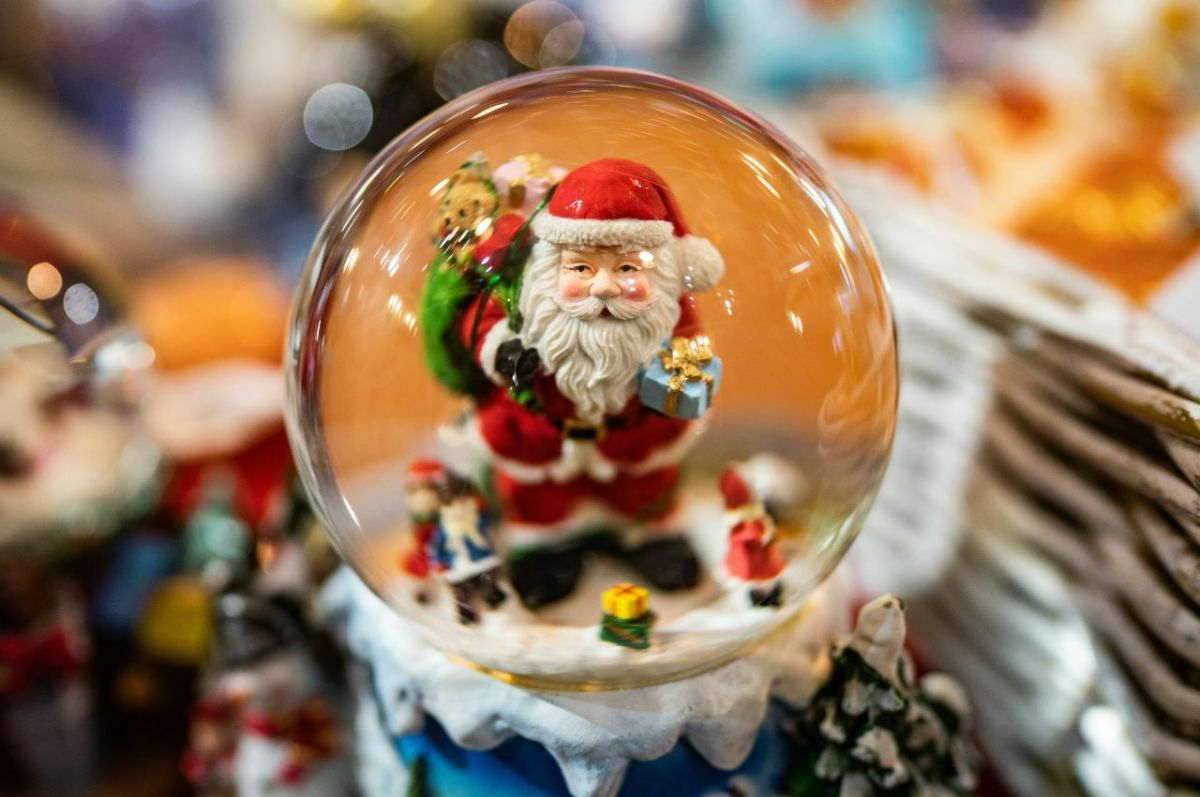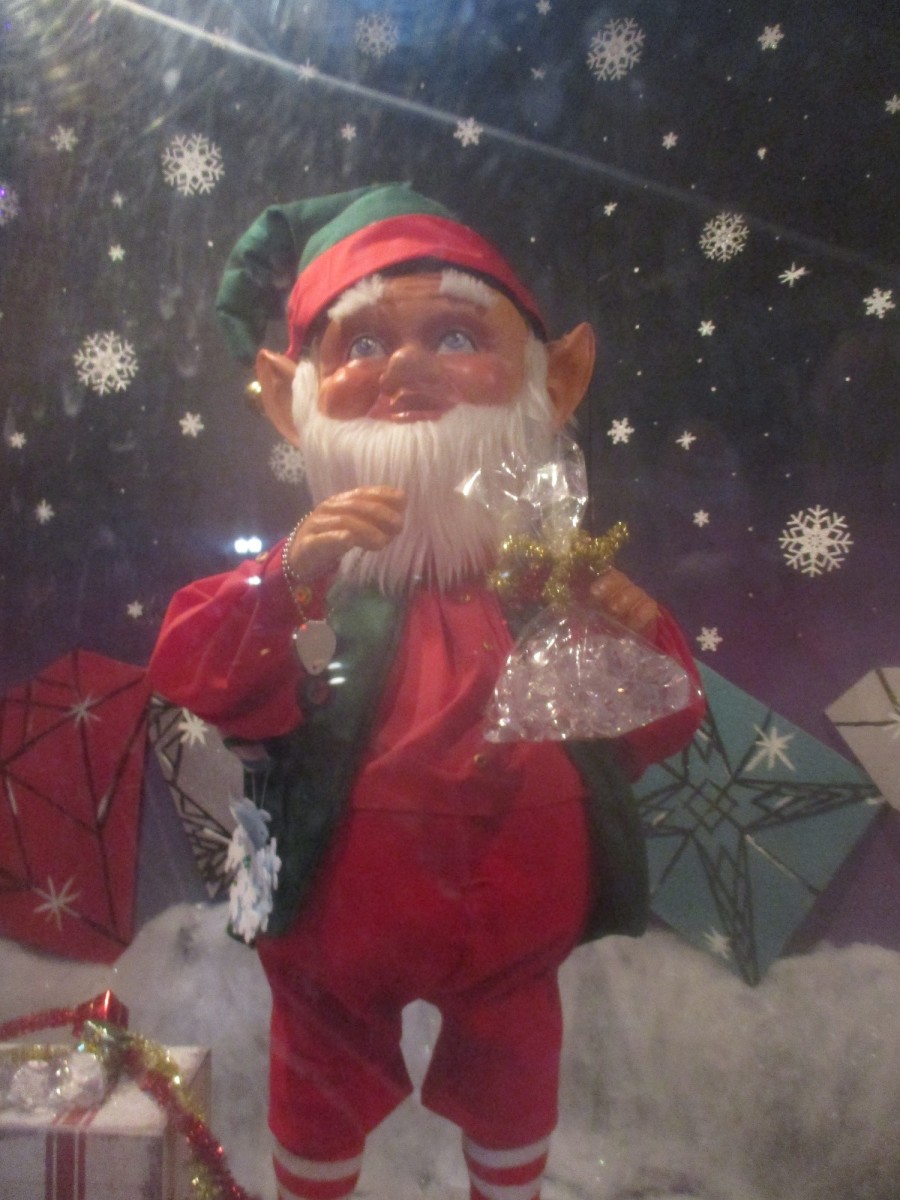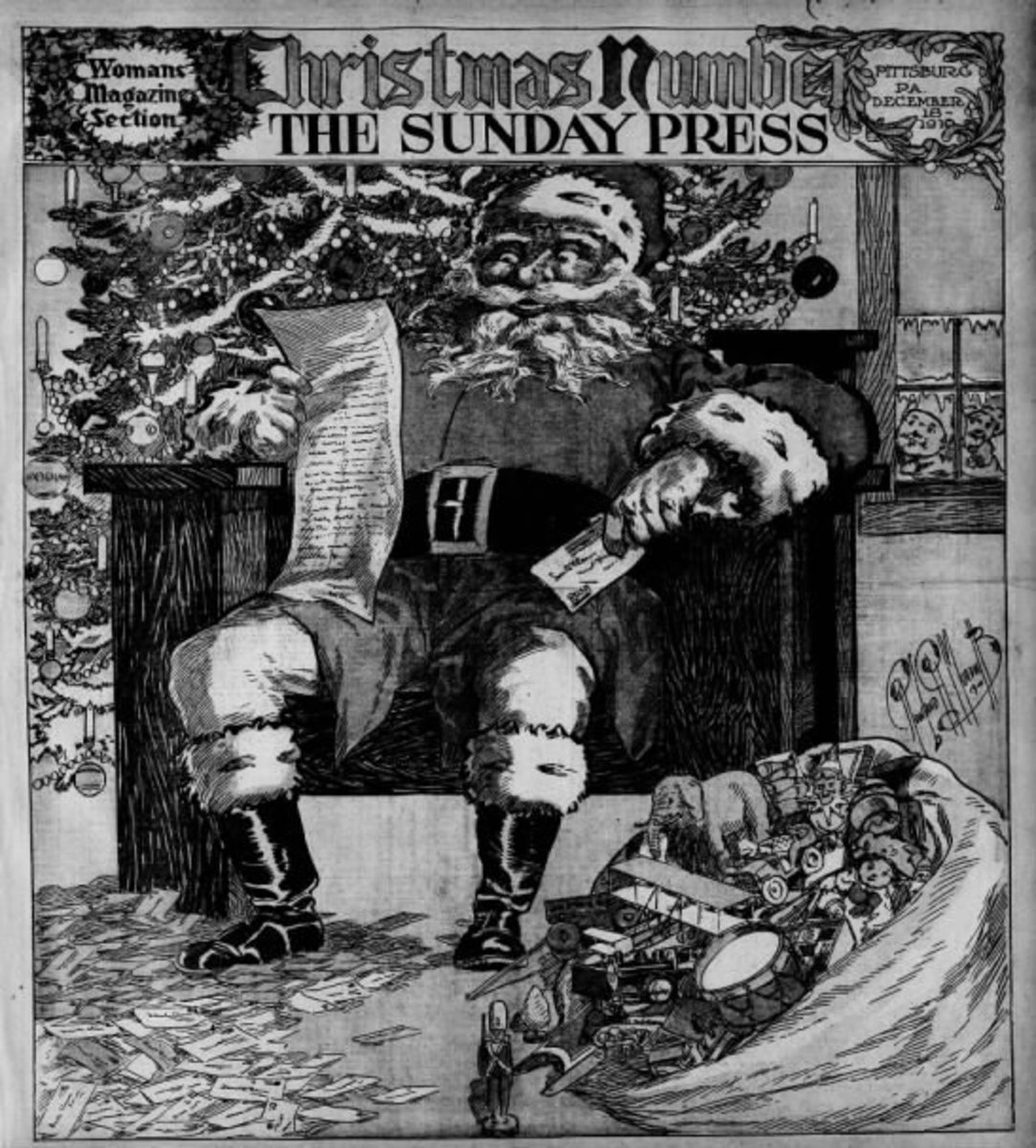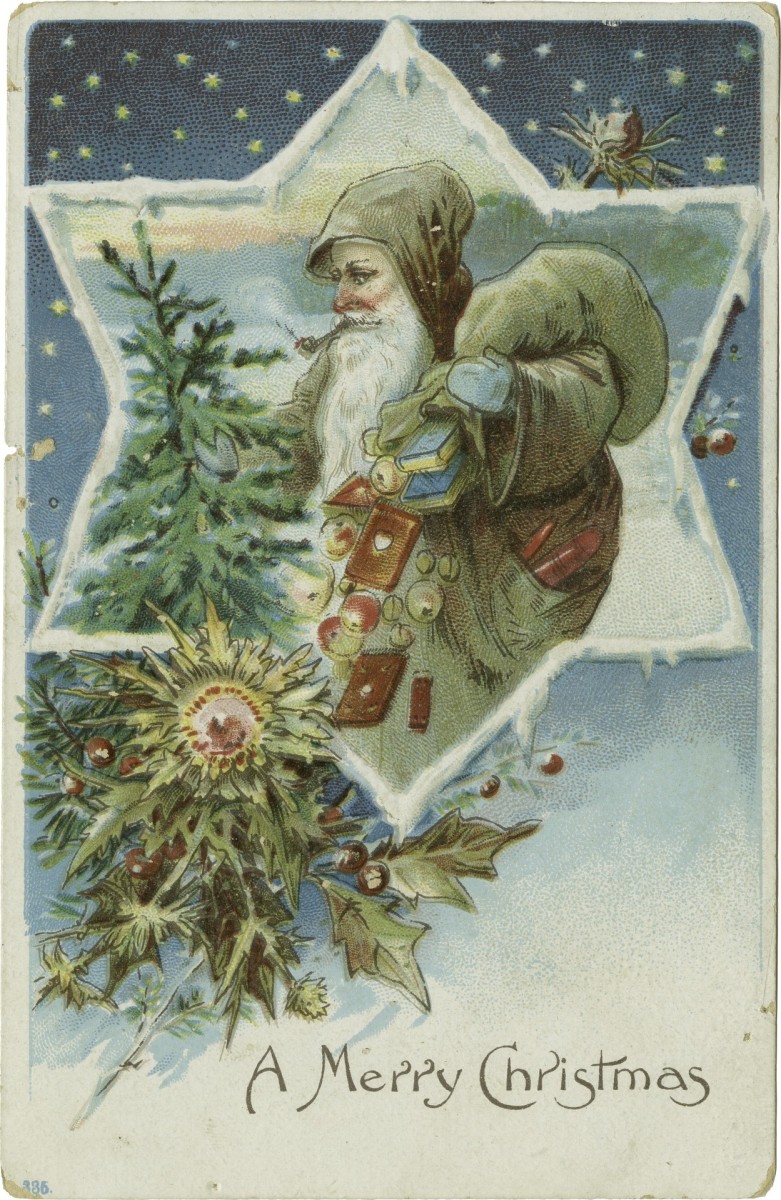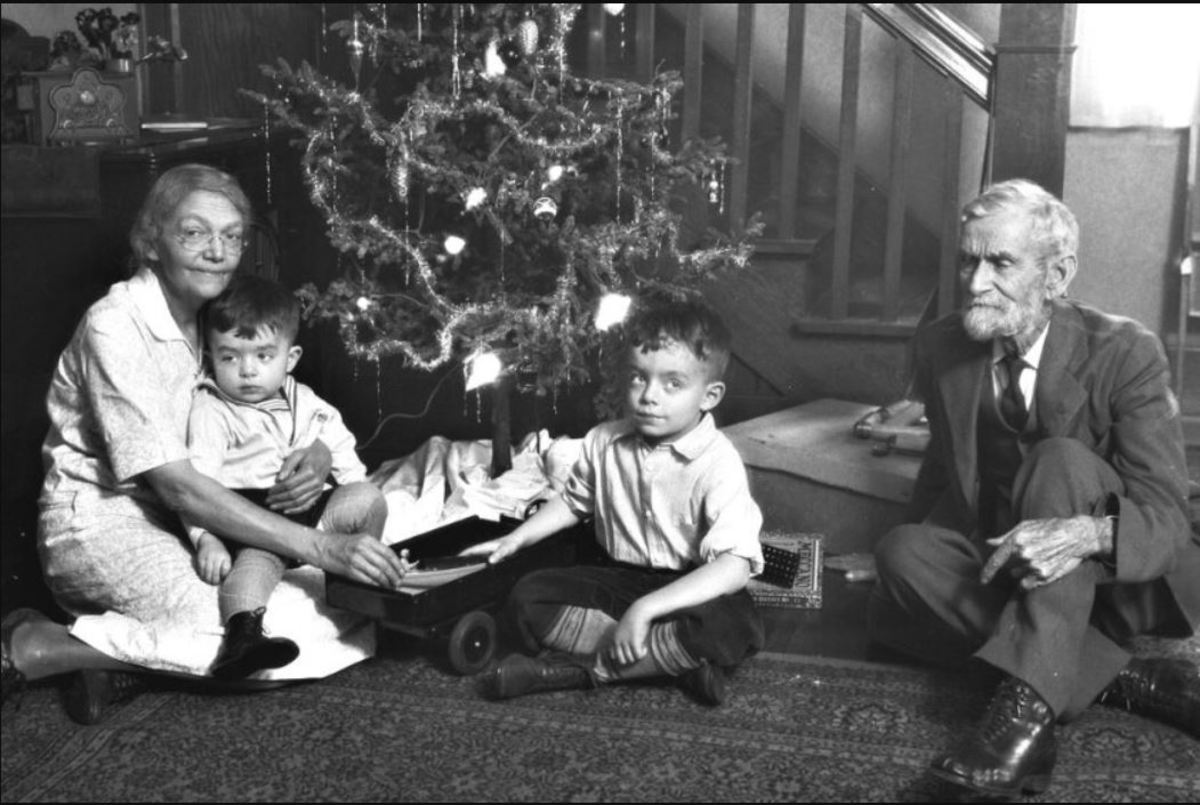Pre Christian Roots of Christmas and Santa Claus
Pre-Christian Roots Of Christmas
Many of the traditions and customs that are part of our current Christmas festivities have been with us since long before the birth of Christ. Christmas, as we know it today, evolved from year end and new year holy days that were celebrated in the Near East, Rome and Northern Europe.
Before Rome "converted" to Christianity there were three major holy days that were celebrated:
While this is only a brief introduction to the similarities between our current Christmas and the holy days of the ancients one can see how these traditions and customs found their way into Christianity after Rome became "The Church".
These holy days of the gods were not abandoned by the new religion, they were embraced by it. They were disguised and incorporated into Christianity and over the hundreds of generations that passed they have become widely accepted as being Christian in origin.
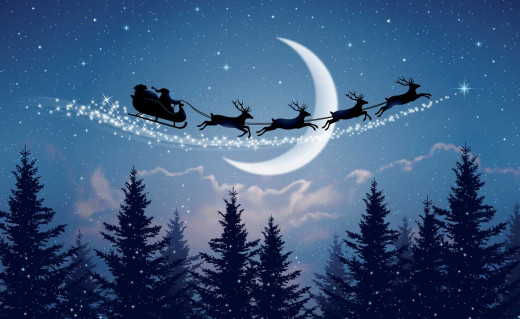
Saturnalia
Saturnalia began on December 17 and lasted for eight days.
This festival was in honor of Saturn who was a prehistoric king and god that was believed to have taught their ancestors agriculture, civilization and peace. The celebration started with the sacrifice of a pig which was attended by the public.
Some of the other traditions and observances for Saturnalia included:
Games, feasting, no punishment for criminals,
schools closed, and no working. All fights and arguments were forgotten
and grudges were supposed to be forgiven (at least for the duration of
the festival).
Natalis Solis Invicti (Birthday of the Unknown Sun)
A holy day in honor of the god Mithras which was held on December 24.
The festival of Natalis Solis Invicti or Birthday of the Unknown Sun, was originally supposed to have been held on the Winter Solstice, but the date was miscalculated.
Mithras was the god of light and truth who was believed to be responsible for the vanquishing of the Winter, providing for the return of Spring.
Children and Santa
Do you believe it is OK to tell your children that Santa Claus is real?
The Kalends
This festival was held during the first few days of January in honor of the god Janus. During this time people were expected to be very generous.
Presents were bought for friends and family and donations were made to help the poor.
What Were You Taught About Santa Claus?
Were you taught as a child that Santa Claus was real?
The Romans
The Romans kept candles and lamps burning continuously to keep away evil spirits and they decorated their homes with green boughs of laurel. They even decorated trees with toys, trinkets and masks of the god Bacchus.
Those who followed Mithraism also placed and image of their sun god at the top of the tree and added candles to the tree's decorations.
The Origins of Santa Claus
Just where did Santa Claus come from? Why do most accounts have him living at the North Pole? Is there any truth to the stories of kind and generous souls who left gifts for children on Christmas Eve? Where did the reindeer come in, and why does he wear a red suit?
St. Nicholas - Kris Kringle
St. Nicholas, who was a Greek Orthodox bishop in the 4th century of what
is now Turkey is one of the earliest ideas of what we now know as Santa
Claus. He was a kind and generous soul who gave gifts and dowries to poor children. There is also the German god Odin, who led the hunt of the Yule in the sky on a large horse with eight legs... eventually giving birth to the concept of eight reindeer. Children would leave food
for Odin's horse in their shoes and be rewarded with gifts. When Christianity came to Germany, the gift giver was Christandl or "Christ Child"... also known as Kris Kringle.
The idea of Santa Claus having assistants or "helpers" could possibly be taken from Odin's two ravens who kept an eye on things, helping decide who was deserving of gifts. A less "politically correct" version has St. Nicholas freeing a slave known as Pitir who assisted him in delivering gifts. The name Zwarte Piet, or Black Peter is thought to mean the helpers have dirt covered faces from going down chimneys to deliver gifts.
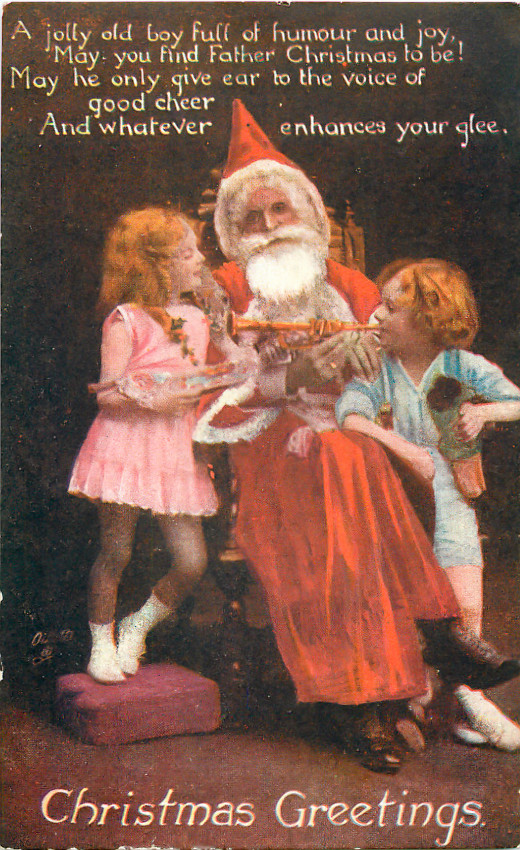
Father Christmas
In Britain, the giver of gifts became known as Father Christmas, who was based on St. Nicholas. This is where the more modern ideas of a cheerful, stout man started to form. His robes were green, rather than red, but he represented the good will and kindness associated with the Christmas season. Gold coins were one of the gifts he would give, and it
is thought that when the windows of a home were locked, he would throw the coins down the chimney. Stockings were often hung on the hearth to dry, and it is thought that the coins would get caught in them, thus giving birth to hanging stockings to catch the gifts.
A majority of the original colonists were Puritans or "Saints", and rejected the English idea of Father Christmas. It was only after the American Revolution that New York, in honor of it's Dutch lineage, began to once again honor the tradition. The jolly figure we know today began to come to life in Washington Irving's humorous "Knickerbockers History of New York" where he made several references to St. Nicholas as a colorful elf
rather than a stern bishop. Indeed, even the name Santa Claus comes from the Dutch "Sinter Klaasen".
Santa Drank White Rock
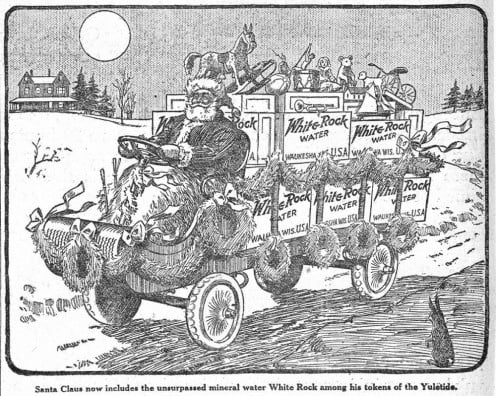
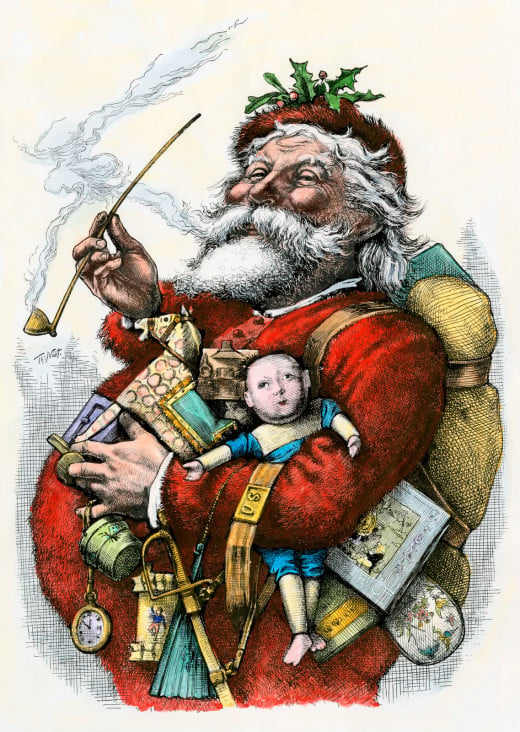
The Image of Santa Claus
The image of Santa Claus that
would stick for all time was described in an anonymous poem "A Visit
From St. Nicholas", (also known as "The Night Before Christmas"). It was
supposedly written in 1823 on Christmas Eve by a man named Clement
Clark Moore, however, it has been suggested that a man named Henry
Livingston, who wrote humorous children's prose was the actual author.
The poem describes a large jolly man delivering gifts while everyone
slept on the night before Christmas. It inspired Thomas Nast to paint
the image of what is now recognized as Santa Claus.
The soft
drink Coca Cola would have its role as well in promoting Santa's image
as a large laughing man in a red suit and a full white beard. The early
1930's saw a slew of advertising campaigns for Coca Cola started by
Haddon Sundblom in 1931.
There are those that would say that Santa was indeed created by the Coca Cola company... however it wasn't the first soft drink to use Santa Claus as an advertising gimmick. That honor would go to White Rock Beverage who began selling the mineral water and later ginger ale using the image as early as 1915.
In recent times there has been talk of bringing back the more sedate, religious version of St. Nicholas into Christmas tradition. It doesn't seem likely that will happen... the image of the roly-poly heavyset man in the red suit has become very much a part of the celebration of the holiday.
While some may say that Santa is nothing but a marketing tool, he does have a history... and a place in the hearts of children everywhere.
- Christmas Traditions and Customs From Around The World
December 25 is the day Christians celebrate as the birth of Jesus Christ... however, it is unknown when the birth actually happened, and the chances of it being in December are slim. December 25 was...
Today's Christmas Rituals
Today's
Christmas rituals, especially in the United States and Europe, involve
many visits to Santa Claus in constructed winter villages or shopping
malls. Children eagerly await to have their picture taken with Santa and
tell him what they are wishing for, assuring the kindly old gentlemen
that they had been "good" the previous year. On Christmas Eve it is a
popular tradition to leave a snack on the mantel of the fireplace for
Santa to enjoy as he makes the rounds all over the world delivering
gifts... which can be related to leaving food for Odin's horse in
ancient Germany.
Letters to Santa
Letters to Santa are written annually, and most in the United States are directed to Alaska. He has many addresses where mail can be sent, and postal volunteers answer thousands of letters each year. Places such as Canada, England and Finland have special zip codes for letters to Santa... in Canada the
zip code is H0H 0H0, and the address in Finland is in the Arctic Circle. Santa has also kept up with the times, and there are several websites where children can send Santa an email.



